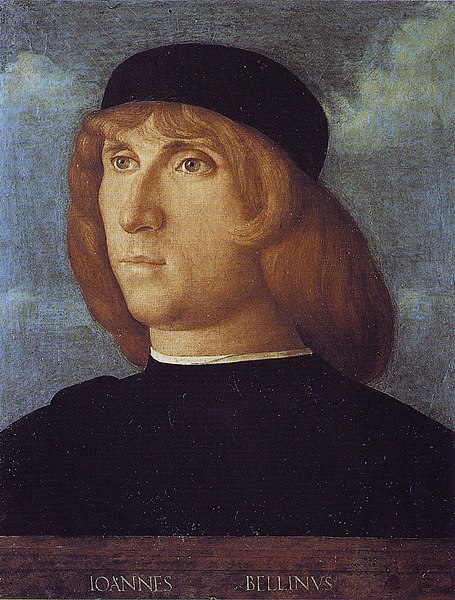
Born: c. 1430, Venice
Died: 29 December 1516 (aged ~86)
Period: Venetian Renaissance
The Life of Giovanni Bellini
Giovanni Bellini was an Italian Renaissance painter, celebrated as one of the pioneers of the Venetian school of painting. Born into a renowned family of artists in Venice, with his father Jacopo Bellini and brother Gentile Bellini both being famous painters, Giovanni was destined for an artistic career. His works are characterized by their rich color palette, detailed landscapes, and deep emotional expression, marking a significant departure from the formal constraints of his predecessors.
Bellini’s early works were influenced by the Byzantine tradition, reflective of Venice’s cultural connections with the East. However, his style evolved significantly over the years, incorporating the advancements in perspective and anatomy that were being developed in Florence and other centers of the Renaissance. His encounter with Antonello da Messina, a Sicilian painter who brought the technique of oil painting from the Netherlands to Italy, had a profound impact on Bellini’s technique. He adopted oil painting, which allowed for greater depth, richness of color, and detail in his works, a practice that would become a hallmark of Venetian art.
Bellini’s religious compositions, particularly his numerous altarpieces and Madonna paintings, are noted for their serene and meditative quality. He was also a master of portraiture, capturing the individuality and inner life of his sitters with remarkable sensitivity. His landscapes, often serving as backdrops for religious scenes, are celebrated for their naturalism and atmospheric effects, prefiguring the landscape tradition that would become central to Venetian painting.
Throughout his long career, Bellini received commissions from the highest echelons of Venetian society, including the Doge and leading religious institutions. His influence on the next generation of Venetian painters, including Titian, Giorgione, and Sebastiano del Piombo, was profound. Bellini’s blending of meticulous detail with rich color and innovative use of oil paint laid the groundwork for the Venetian Renaissance and cemented his reputation as one of the era’s leading artists.
Giovanni Bellini continued to paint and innovate until his death in 1516, leaving behind a legacy that would shape the direction of Western art. His works are cherished for their beauty, emotional depth, and technical mastery, embodying the spirit of the Renaissance in Venice.
Giovanni Bellini’s Notable Works
Giovanni Bellini, a master of the Italian Renaissance, is renowned for his contributions to the Venetian school of painting. His works are celebrated for their serene beauty, meticulous detail, and pioneering use of color and light. Here are ten of Bellini’s most famous and influential works:
- San Zaccaria Altarpiece (1505) – This altarpiece, located in the church of San Zaccaria, Venice, is one of Bellini’s most celebrated works, showcasing his mastery of color, light, and space. It depicts the Virgin and Child enthroned, surrounded by saints.
- St. Francis in Ecstasy (c. 1480) – This painting captures St. Francis of Assisi experiencing a vision in the wilderness. It’s notable for its detailed landscape and the emotional depth of the saint’s expression.
- The Feast of the Gods (1514) – Completed late in his career, this mythological scene was commissioned by the Duke of Ferrara, Alfonso I d’Este. It’s one of the earliest examples of a landscape painting in the Renaissance.
- Madonna of the Meadow (c. 1500) – Also known as the Madonna and Child with St. John the Baptist, this tender portrayal of the Virgin Mary with Christ and St. John is celebrated for its peaceful landscape and harmonious composition.
- Transfiguration of Christ (c. 1480) – This work, depicting the moment of Christ’s transfiguration on Mount Tabor, is admired for its dramatic portrayal of light and its spiritual intensity.
- The Baptism of Christ (c. 1500-1502) – Bellini’s rendition of Christ’s baptism by John the Baptist showcases his skill in depicting narrative scenes within beautifully rendered landscapes.
- Portrait of Doge Leonardo Loredan (c. 1501-1505) – This iconic portrait of the Venetian Doge is a masterful example of Bellini’s portraiture, capturing the dignity and authority of the sitter with remarkable realism.
- Agony in the Garden (c. 1465) – One of Bellini’s earliest works, it depicts Christ praying in the Garden of Gethsemane. The painting is noted for its emotional depth and the innovative use of a nocturnal landscape.
- Madonna of the Small Trees (c. 1487) – This painting is another of Bellini’s numerous Madonna and Child compositions, distinguished by its intimate atmosphere and the detailed depiction of the trees and landscape.
- Pietà (c. 1460) – Though earlier in his career, this representation of Mary mourning over the dead body of Christ showcases Bellini’s deep understanding of human emotion and his ability to convey it through art.
Giovanni Bellini’s legacy is characterized by his profound influence on the Venetian Renaissance and the development of landscape and religious painting. His works continue to be revered for their beauty, emotional depth, and technical innovation.